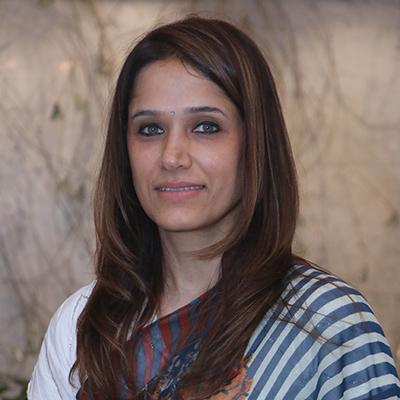IEEFA India: Interpreting solar tariff trends
This Q&A first appeared in RenewableWatch
Solar energy tariffs have witnessed a gradual decline over the years in India and globally. A recent auction for 2 gigawatts (GW) of solar projects conducted by the Solar Energy Corporation of India (SECI) witnessed a record-low tariff of Rs 2.36 per kWh. At the same time, the world’s lowest solar tariff of $0.0135 per kWh was discovered in a 2GW solar tender announced in Abu Dhabi. Reportedly, for a 700MW solar auction in Portugal, a tariff of Euro 0.01114 per kWh was discovered, which is even lower than the tariff discovered in Abu Dhabi.
While low tariffs are encouraging, the question of viability arises. Sector experts share their views on the reasons for such low tariffs, and the impact of domestic manufacturing of solar modules and cells, import duties, and a shift towards hybrid projects on tariffs going forward.
What is your opinion on the solar tariff of Rs 2.36 per kWh discovered recently in the SECI tender (Tranche IX)? What are the key reasons for the discovery of such low tariffs?
Vibhuti Garg, Energy Economist, IEEFA
The solar tariff of Rs 2.36 per kWh discovered in the recent SECI auction seems very aggressive. As per the Institute for Energy Economics and Financial Analysis’s (IEEFA) analysis, any solar tariff below Rs 2.50 per kWh in the current market conditions in India is unsustainable. Winning should lead to the delivery of projects. Or else instances such as the cancellation of projects by ACME Solar with a tariff as low as Rs 2.40 per kWh and ReNew Power cancelling a power purchase agreement for a wind project, set a bad precedence.
Winning should lead to the delivery of projects
The players that won this low tariff of Rs 2.36 per kWh are backed by international investors, which reduces their cost of debt. Further, these projects were bid out before the imposition of basic customs duty, so the developers have bid at a very attractive price before more tariff and non-tariff barriers were imposed to promote domestic manufacturing.
Arun Tripathi, Head, Energy Business (Solar, Wind, Storage), Procurement & EHS, Hero Future Energies
The lowest solar tariff of Rs 2.36 per kWh as discovered in the recently concluded SECI tender is a vindication of solar energy becoming one of the cheapest sources of electricity in India. It also brings to focus, the increasing divergence between solar and wind tariffs.
Solar tariffs across the world have been on a downward trajectory primarily due to the declining cost of solar modules and the introduction of higher watt power modules. The tariff discovered in Tranche-IX of the SECI tender is, therefore, no anomaly. However, the industry might have been a bit aggressive as the reverse auction happened just before the imposition of safeguard duty on solar modules.
How is the domestic manufacturing of solar cells and modules likely to impact solar tariffs? What will be the impact of customs duties and other import barriers?
Vibhuti Garg
Solar tariffs are likely to go up temporarily on account of domestic manufacturing and the imposition of customs duties, taxes, etc. until economies of scale are achieved. However, with further improvements in technology and reduced costs of debt, prices will follow a downward trajectory and compensate for the increase in tariff. With the installation of a single axis tracker, bifacial modules and robotic module cleaning systems, generation will be higher, bringing costs down.
Arun Tripathi
As a home-grown company, we enthusiastically support the “Atmanirbhar Bharat” mission of the Indian government. This sector needs doses of reforms and reliefs to match the cost of solar panels from China. A long-term perspective coupled with tariff and non-tariff barriers can make the domestic manufacturing sector truly competitive. Domestic manufacturers should gear themselves to supply high quality solar cells and modules at cost-effective prices with continued technological advancement.
With the imposition of customs duties and safeguard duties on the import of solar cells, modules and other associated components, the solar industry can expect slightly higher tariffs for projects with similar risk profiles in the near term.
What will be the tariff trends for hybrid solar projects (solar-wind, solar-thermal, round-the-clock power)?
IEEFA expects solar tariffs in India to continue to decline by 5-10% over the next decade
Vibhuti Garg
IEEFA, along with JMK Research and Analytics, has undertaken detailed financial modelling to estimate the tariffs for hybrid renewable energy projects. On the basis of the analysis, the levelised cost of electricity (LCoE) comes to Rs 2.49 per kWh for a 250MW wind-solar hybrid plant with blending of solar and wind in the ratio 80:20, while blending solar and wind in the ratio 50:50 results in a tariff of about Rs 2.57 per kWh. On analysing the impact of adding a storage component to a wind-solar hybrid project for a two-hour battery back-up, the LCoE increases substantially to Rs 4.59 per kWh. Clearly, adding battery storage is not a feasible option at present because it significantly increases project costs and hence tariffs. However, the declining trend in battery prices will make projects viable in a few years and provide a more stable power.
Arun Tripathi
Solar is currently one of the cheapest sources of renewable energy across the world. As such, it will continue to play an increasingly important role in hybrid projects. In several hybrid tenders, solar plays the role of reducing the overall tariff. The tariff trajectory for hybrid tenders is dependent on several factors such as the availability and suitability of sites for hybrid tenders, solar levelised cost of energy (LCoE), wind LCoE, storage costs and tender requirements. I believe that the pricing trajectory of hybrid tenders in the short term is likely to be volatile. I am expecting hybrid solar tenders to be a growing trend in the near term. Moving forward, the hybridisation of different renewable technologies coupled with energy storage will become the norm.
How do these solar tariffs compare to global numbers, especially in light of the low solar tariffs discovered recently in the UAE and Portugal?
Vibhuti Garg
The Gulf region has achieved tariffs in the range of 1.35-1.80 cents per kWh, and Portugal hit another new record low with a tariff discovery of 1.32 cents per kWh in the 700MW solar energy auction held on August 24, 2020. In comparison, tariffs discovered in India are in the range of 3.14-3.25 cents per kWh.
It is unlikely that India, or indeed other countries, will be able to achieve the same low tariffs recorded in the Gulf countries or in Portugal as the economic, tax and financial make-up of each country plays a direct role in determining tariffs. Recent record-low tariffs in Abu Dhabi, Dubai, Saudi Arabia and Qatar are the result of the lower cost of the US dollar denominated, long-dated financing, major tax concessions and other factors driving prices down in the region. It would be extremely difficult for the Indian market to replicate the combination of factors leading to low solar tariffs in the Gulf region. In fact, with solar modules facing permanent Indian import duties, this will widen the tariff differential as compared to the Gulf countries. IEEFA expects solar tariffs in India to continue to decline by 5-10% over the next decade, making solar an increasingly more competitive source of electricity generation.
While low tariffs are good, they should not become unsustainable
Arun Tripathi
There is no doubt that solar tariffs in certain parts of the world have been substantially lower than those discovered in India. However, an appropriate comparison is suggested only in light of the difference in irradiation levels, corporate tax structure, financing costs, import tariffs on solar equipment, land prices and return on equity expectations.
What is your perspective on the quality concerns arising from low tariffs? Will these issues magnify in the coming years?
Vibhuti Garg
In order to win bids, developers are quoting low tariffs. While low tariffs are good, they should not become unsustainable, or else they will push developers to cut corners by procuring low-quality products, thereby impacting the efficiency and longevity of the projects. It is necessary to set more reasonable expectations of tariff levels in India. If expectations are not managed, renewable energy developers will continue to cancel bids and not honour their commitments, or will try to renegotiate tariffs.
Arun Tripathi
There have been concerns with respect to the viability of tariffs ever since the early phase of solar tendering in India. Developers in India have significant experience in the renewable energy sector, and thus the generation numbers from solar plants have been at par with expectations. Developers are facing major challenges around connectivity, land acquisition, policy and regulatory uncertainty, health of discoms and reopening of power purchase agreements by certain discoms.
The fair amount of investment in the solar sector is a testament to the fact that international investors have faith in the quality of assets in India. Therefore, concerns regarding their quality are unfounded. Also, falling tariffs is not an India-only phenomenon, solar tariffs have been on a downward trajectory across the world.
This Q&A first appeared in RenewableWatch
Related articles:
IEEFA: These 7 auctions show India’s renewables sector is still primed for growth
IEEFA: Why India can’t match the Gulf region’s record-low solar tariffs












